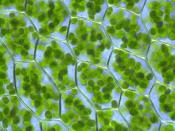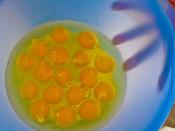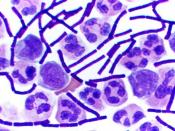Bacterial cells are ÃÂProkaryotic cellsÃÂ. These cells have several internal structures and surface structures. The cell walls are of two types, ÃÂgram positiveÃÂ and ÃÂgram negativeÃÂ. Out of all the structures, the two selected structures are the cell- wall and endospores. The cell- wall of bacterial cells is found in three distinct shapes such as spherical, spiral and rod shaped. The cell wall of the bacterial cells is composed of the proteins and polysaccharides. This is collectively called ÃÂpeptidoglycanÃÂ. The cell- wall helps the bacterial cell to survive at a greater degree, as an independent ÃÂunicellularÃÂ organism. This provides protection to the cell from the turgor pressure, which is raised due to an increased level of protein concentration in the cells. The cell- wall is very important because it determines the shape of the particular cell (Bacterial Cell Structure, 2009).
The second structure of the prokaryotic bacterial cell is ÃÂendosporeÃÂ.
These are the internal structure of the bacterial cells. This is a tough and inactive structure of the bacterial cell, which does not take part in reproduction. In well- developed endospores, multiple numbers of layers are found in the resistant coat. These layers consist of the ÃÂspore coatÃÂ and the ÃÂcortexÃÂ. The endospores have a thin covering over them called ÃÂexosporiumÃÂ. The endospores are composed of metabolic and protective proteins, calcium dipocolinate. The spore coat is made up of keratin like protein. Exosporim is made up of lipids and proteins. In the composition of the endospores, the RNA molecules and enzymes also take part. The endospores are the cell structures, which help the cells to survive in the adverse environmental conditions and chemical effects. It reduces the stress on the cells of the higher degree of temperature (Kaiser, 2007). These structures are very important, as they...


